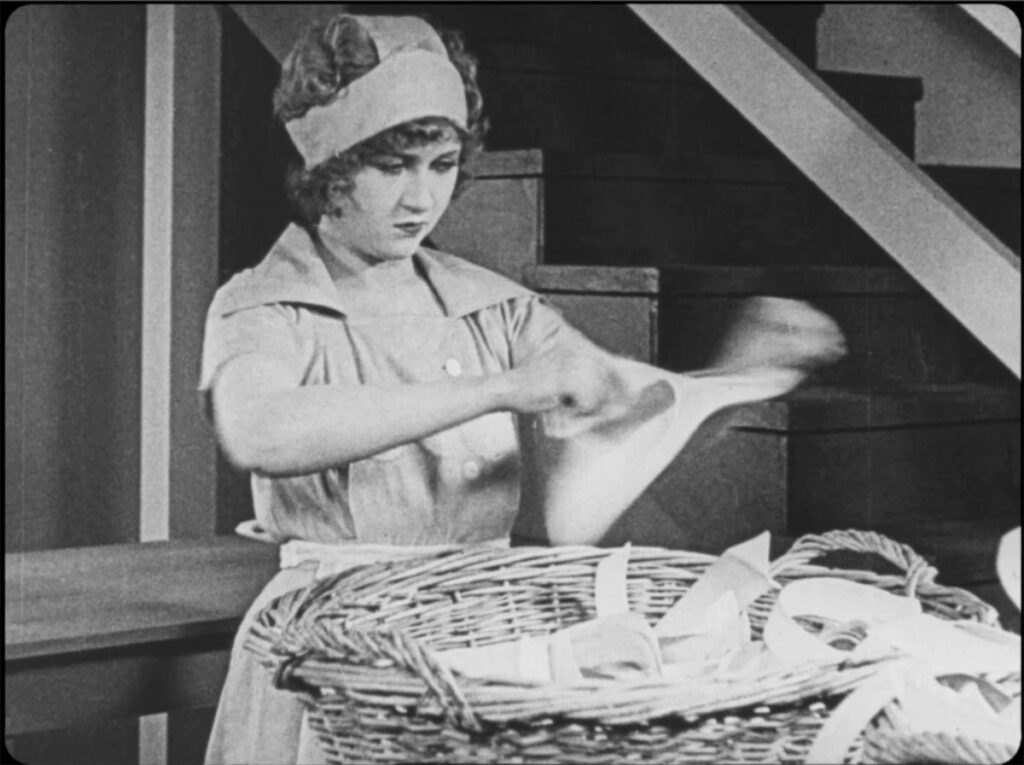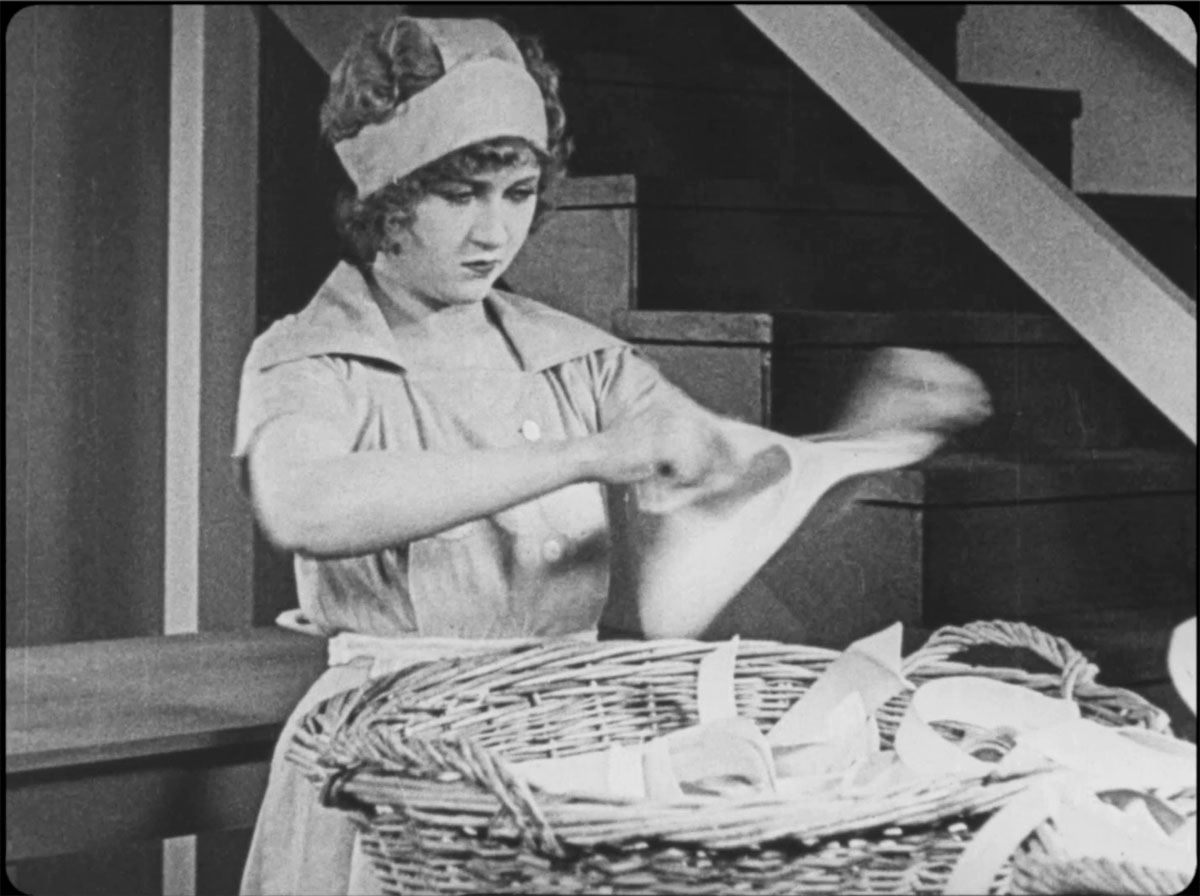A ventriloquist isn’t actually throwing their voice, although that’s often how the skill is referred to. The ventriloquist’s voice appears to be coming from the dummy because the artist is creating an illusion. She or he is paying attention to the dummy or puppet as if it were actually the one speaking. A similar misdirection can happens in Silent Film.
A comment posted on the last entry in this series (BTW, sorry I’ve dropped the ball for a few days) has prompted me to mention the use of perceived sound in Silent Film. Because of that silence, a sound can happen in a different space or in a different way than it’s registered as being heard. Usually for comic effect.
Case in point is the example of ripped pants in a couple different silent comedies. The comment on post #31 reminded me that in the Stan Laurel Collars and Cuffs (1923) there is a bit where Stan thinks he is repeatedly ripping his pants. We are shown what Stan is hearing: a woman who also works in the laundry where he’s employed has a basket of shirt collars which she is ripping, one by one. It’s clear from the way we’re shown the space they’re both in that Stan and the woman, played by Katherine Grant, are maybe 8-10 feet away from each other.
In reality, you can hear the difference between a sound happening several feet away and a sound happening to the pants you are wearing. We should expect this of Stan, or of the young woman in the Laurel & Hardy comedy The Finishing Touch, whom Stan and Ollie deliberately prank with this. The logic of this goes out the window. Because, as I’ve mentioned before, in the Silent Film universe we will believe what the performers onscreen believe.

Buster Keaton and Kathryn McGuire should be able to tell that what they’re hearing is a Victrola playing a record of “Asleep in the Deep”. It’s eerie, to be sure, but if you’ve heard a Victrola playing a shellac 78rpm record you know it doesn’t sound exactly like someone in the room with you. We actually don’t know what it is they think they’re hearing, but the context of the scene lets us know that it sounds ghostly and creepy to them.
In the climactic fight in Harold Lloyd’s The Kid Brother (1927), the circus strongman (Constantine Romanoff) has cornered Harold in an abandoned ship. Harold’s backed up against a wall, and Romanoff his wielding a piece of lead pipe. He hit’s Harold over the head with it. Three times. The strong man pauses, confused as to why Harold is unharmed. Lloyd sees an opportunity and runs off, revealing a steel L-brace on the wall that had been hidden by his hair. We realize that this is what Romanoff has hit with the lead pipe. Three times.
And at no point does the loud metallic clank the two objects make when struck against each other tip him off. Both Romanoff and Lloyd play the reality of the gag, and the reveal of the object that’s been hit gets a laugh. And at no point do we think “but shouldn’t the metallic clank have been obvious on the first hit?”
I’ll skip the gag sequence with Josephine the monkey walking around in human shoes, earlier in the sequence,fooling the strong man, but this also fits this discussion. As long as the strong man believes the rapid footsteps of of a very small monkey are the same pace as those of Mr. Lloyd, so do we.
My favorite use of this notion of perceived sound is used by Marcel Perez in this 1916 comedy Lend Me Your Wife. A handful of people who have been chasing “Tweedledum” around are in the living room of a house, and Perez has escaped them by climbing up the house to its roof. Perez gets an idea, and goes over to the chimney and yells into to. A title card cuts in that says “Boo-oo-oo!”, and then Perez cuts to his adversaries hearing this through the fireplace. Perez is expecting that we hear what the others do, but also asks that we imagine how his voice distorts and echoes when going from the top of a chimney then all the way down it and out the flue.
The first post in this series is here.
The previous post (#31) to this one is here.
The next post (#33) is here.

Just curious. Why would you be tearing collars in half?
Thanks, Ben!
A variation of the “rip” bit is used by Jerry Lewis (my fave “silent clown”) in THE CADDY (1953). Jerry is undressing in the golf course locker room when other caddies “prank” him by ripping a towel. Jerry hears the “rip” sound, and thinks he’s split his trousers. As he reaches for his behind to feel for the tear, his hand connects with the face of a caddy sitting on the bench. As Jerry fondles the mans face thinking its his own bare butt, his hand finds the man’s nose. Jerry “takes it big.”